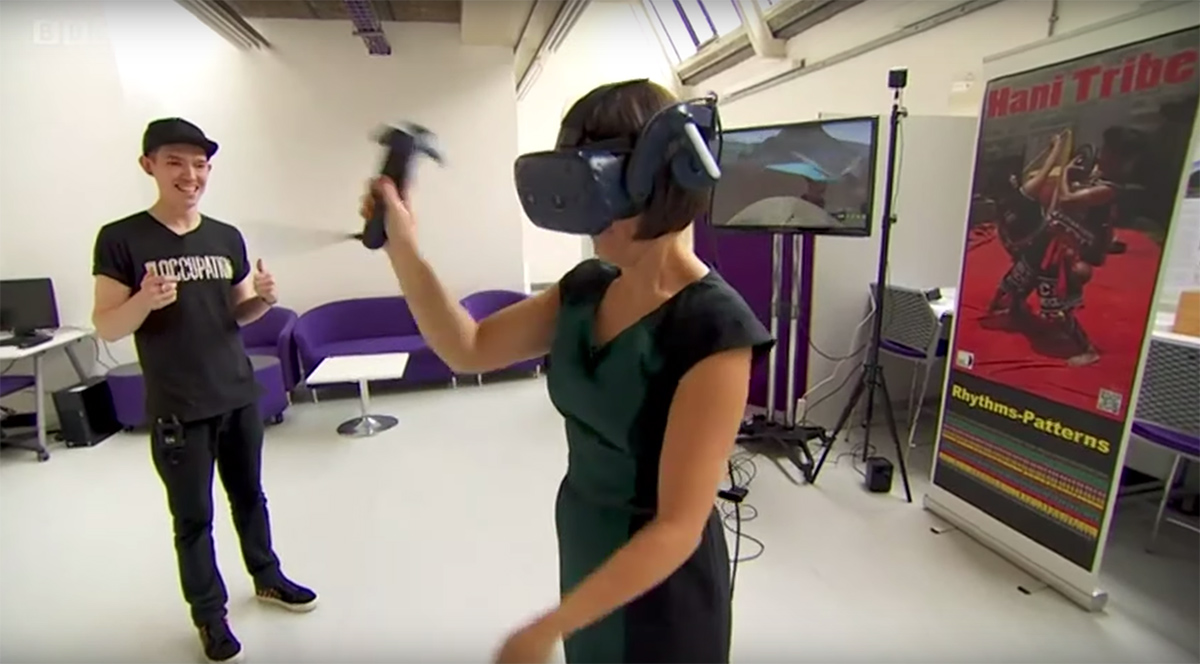The pioneering work in virtual reality (VR) from UCLan's Global Sound Movement (GSM), which is allowing rare musical instruments from around the world to be digitally preserved, was showcased at the British Science Festival. GSM's innovative work with VR allows user interactivity with instruments from hard to reach geographical locations. Participants play music whilst receiving haptic feedback and triggering the actual sound of the musical instrument. The technology also allows for remote tutoring from someone in a different location, but within the same VR environment. Paresh Parmar, Co-founder of Global Sound Movement and Senior Lecturer at UCLan, said: "GSM is dedicated to preserving musical instruments of cultural significance and combining innovative new technologies making them globally accessible. This enables musicians and non-musicians to access these wonderful instruments and sounds, whilst providing resources for the original communities GSM worked with." A core belief of GSM is to preserve and share the sounds of the world. To achieve this, GSM is constantly developing new technologies to expand the reach of their work and enable people, regardless of musical talent, to engage, compose or simply enjoy music. The virtual instruments and corresponding
sound libraries can also be integrated with music production software, enabling composers internationally to use these rare sounds. All proceeds from the technology goes back into the local communities from which the instruments are recorded.
Also see:
https://www.britishscienceassociation.org/blog/preserving-rare-instruments-in-the-virtual-worldBev Bush from UCLan Games Design worked with GSM to develop the
Hani Embroidery App.


This research is part of a collaboration with
The Global Sound Movement. Audiences can interact in a unique way with GSM sampled sounds from the drums of the Hani Tribe in China to create an embroidery pattern which celebrates their rhythms and traditional costume designs.
"Can gamification be used as an interactive and transformative tool for artistic expression to engage learning, encourage appreciation and to illustrate traditional, historical and cultural related experience?"
Advertising designer Elliot Harris' animated film of 2002,
'Burberry-Rain' identifies the 4 – dimensional properties of Burberry fabric. In 2013 Sophia George developed a game based on
'The Strawberry Thief' which re-vitalized the art of William Morris. The Hani App moves beyond re-vitalization of a design to involve interaction with sound and illustration of traditional crafts, exploring the use of digital tools to create unique artefacts. This acknowledges and records ideas and objects which may otherwise be lost or forgotten.
'The Art of Computer Game Design.'
(Crawford, C. 1997)'Play, Games and Gamification in Contemporary Art Museums.'
(Romualdo, S. 2013)'Gamification in the Arts.'
(Bouchard, A. 2014)An exploratory, prototyping methodology was used in this project, allowing for a flexible development style. Sprite Designs were created in Adobe Photoshop and implemented into the App using
Scirra's Construct game engine. The work was inspired by GSM's photos and sampled sounds and is available to the public as an
interactive App on the GSM website, also in the GSM South China
Exhibitions and as a
video on Vimeo with images of artefacts that can be purchased from the shop at this
link.







Nenhum comentário:
Postar um comentário